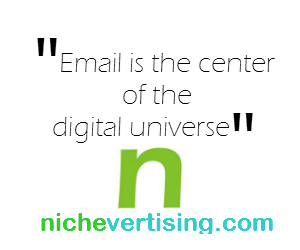 Let’s do a recap of a few of Google’s significant investments over the last year or so. A significant investments in mobile, a significant investment in social media, and a significant investment in email. On the other hand, they pulled investments in a number of areas including Google Reader (RSS) which shut down July 2013 and Google Checkout (payments), which is shutting down November 2013.
Let’s do a recap of a few of Google’s significant investments over the last year or so. A significant investments in mobile, a significant investment in social media, and a significant investment in email. On the other hand, they pulled investments in a number of areas including Google Reader (RSS) which shut down July 2013 and Google Checkout (payments), which is shutting down November 2013.
With these recent moves (among many others – i.e. Fiber, Google Glasses and Self Driving Cars), you can clearly see that Google is actively moving pieces on the chessboard based on how they see the future unfolding.
Each of these moves are important signals to the market that one must not ignore. Since I’m the co-founder of a next-generation email marketing platform, Google’s investments in social, mobile, and email serve as a very loud signal of what they think is important to the future of their main cash cow – Advertising.
What’s of particular interest at this moment in time is Google’s investment in rolling out a new user interface for Gmail, their proprietary email platform used by millions of influential people. Gmail’s new user interface is one of the biggest and boldest advances to email in recent memory.
In short, Gmail automatically filters your email by default to put all email marketing messages on a separate tab called Promotions. A number of top industry publications released blog post attempting to quantify the impact of this change. One that I found particually interesting came from MarketingLand.com titled Keep Calm & Send Email: Industry Experts Offer Hopeful Outlook On The New Gmail Inbox Tabs.
The best quote in this MarketingLand.com article came from Lyris CMO Alex Lustberg as he stated:
Consumers have always filtered the way they read emails into those that are useful and relevant and those that are not. The only difference with the new Gmail system is that it does this automatically. So while it’s no surprise we have seen a slight decline in email open rates (by approximately .57 percentage points) and clicks (.08 percentage points), the overall browsing is net positive for email marketing and open rates.
The promotions tab grabs attention for an audience that is more receptive and the action is done with intent and in a way that is respectful to the customer. As such, the click throughs are more qualified leads, which is ultimately much more helpful for marketers.
Out of all the commentary covering Google’s new Gmail Inbox, Lustberg’s quote comes off as most rational. As Lustberg states, we all attempt to filter our inbox, delete and ignore unwanted marketing emails, and treat emails from our friends, family, and colleagues with a higher priority than emails from brands.
If anything, Google’s (and inevitably Microsoft, AOL and Yahoo) continued investment in providing free email to consumers shows that email is still one of the few critical pieces on a digital marketing chessboard that is full of social and mobile competitors.
The reason for this is that email is both social and mobile. Email is a Business to Consumer, Business to Business and a Consumer to Consumer communication channel. Email is an advertising, marketing, and PR distribution channel as well. Email is all things to all people. Email is the center of the digital universe.
With all the talk that email is dead a few years ago starting to cease, the reality of a new hyper social and mobile future is finally starting to settle in. Now that all the critics have shut-up, it is much easier to see that the smart money is betting that email will remain as important as it was pre-Facebook, pre-Twitter, pre-Iphone and pre-Android.
